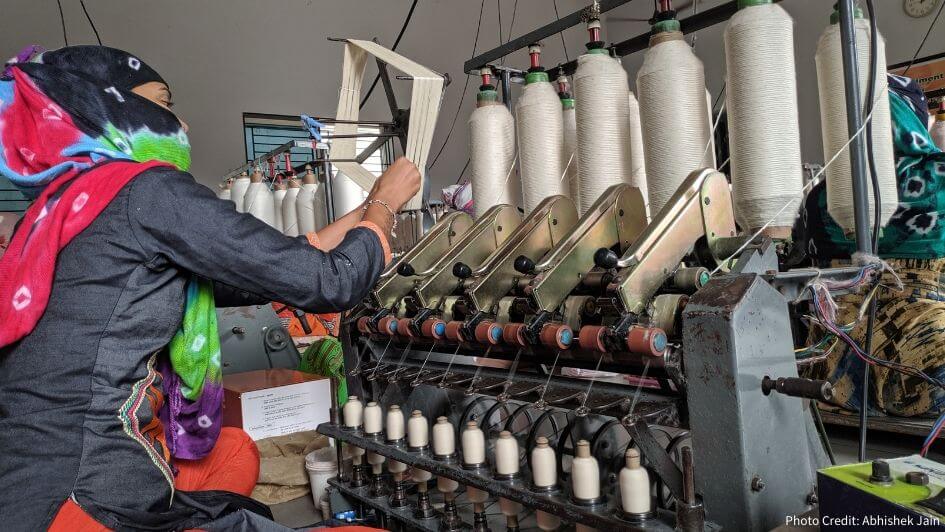Over the last decade, decentralized clean energy solutions have provided basic access to lighting for hundreds of millions around the world. The next decade will be about moving beyond lighting to solutions that increase productivity. Beyond improving quality of life, such solutions have the potential to catalyze economic development and income growth in deprived communities. Here I summarize my own learning on dealing with productive use applications in India over the last two years.
1. The market opportunity is BIG
In India alone, the market is upwards of US $50 billion. Major opportunities are in solar water pumping, cold storage, textile value chain, agro-processing and retail sector.
2. But the market is hard-to-capture
Low customer density means that customer acquisition and servicing costs are high. For certain appliances such as looms, silk reelers etc., cluster-based approaches that concentrate micro-enterprises (with forward market linkages) are more likely to succeed.
3. It’s a game of value, not volume
Barring a handful of appliances (which have a market volume potential in millions of units), most other productive use appliances have a market in tens and hundreds of thousands. But individual asset value is 5-500x higher than mass velocity products (i.e. solar lights).
4. Energy efficiency is the key
For conventional grid-based or diesel-powered solutions, appliance capex is brought down at the cost of energy efficiency. Whereas in the case of DRE-powered solutions, energy efficiency improvements have the biggest positive impact in reducing the capital cost.
5. End-user financing and service-oriented business models would be game-changing
High-capex nature of these products combined with cash-strapped customers means that end-user financing or service-based business models would be critical to enable adoption. For products with relatively low volumes and low capex (INR
6. For manufacturers: It is hard to survive on a single product
Unless one is manufacturing a high-volume product (which are very few), it would be hard to survive (at worst) and scale (at best). Manufacturers need to evolve a portfolio of diverse appliances in same or divergent value-chains.
7. For deployers: Sustaining a single product portfolio would be unviable
Given the fragmented nature of the market, customer acquisition cost as well as after-sales services becomes highly unviable for a single product-oriented business. Exceptions are high volume products such as pumps, sewing machines, or cluster-based deployments (silks reelers, looms, etc.)
8. To survive on a single product – vertical integration is the way to go
A business may survive and scale on a single (category) of product, only if it integrates itself vertically into forward and backward market linkages of the products being produced from the appliance. Moving beyond the business of selling appliances into the business of selling end-products produced by the appliance.
9. There are no big manufacturers for most productive use appliances
While the market collectively is huge, it is highly fragmented. Given that high volume products are very limited (pumps, sewing machines, refrigerators), the market is/would be primarily served by medium- and small-scale manufacturers. Their agility and nimbleness make them more suited for serving this market.
10. Market signals are weak. Only the perseverant and networked can succeed
Lack of awareness and information asymmetry cripples the market. Customers aren’t aware of the possibilities, innovators are clueless about the customer needs, entrepreneurs and market enablers aren’t aware of the market potential. Thus, it takes time to acquire customers, garner support, and move things. Both perseverance and strong networks with diverse stakeholders help.
11. Distribution channels are not apparent, but existing
Traditional distribution channels for selling smaller DRE products may not work. These are low volume, high value products. Risk perceptions would be higher and need more trusted distribution channels. Tapping into existing channels of livelihood products distribution such as agri-input or implement dealers would be the key.
12. Keep in mind the big picture: A new rural economy
Farm incomes are constantly coming down in India. Labor is becoming the dominant income in rural areas. Value addition for majority of the rural produce remain centered in urban areas. DRE-powered livelihood solutions coupled with market linkages could be the catalyst for bringing value addition close to production and consumption and as a result increase rural incomes and prosperity.
Abhishek Jain leads the energy access and livelihoods program at The Council on Energy, Environment and Water. The Council, along with Villgro, is embarking on a multi-million-dollar program to support large scale commercial deployment of clean energy-powered livelihood solutions. Abhishek can be reached at
